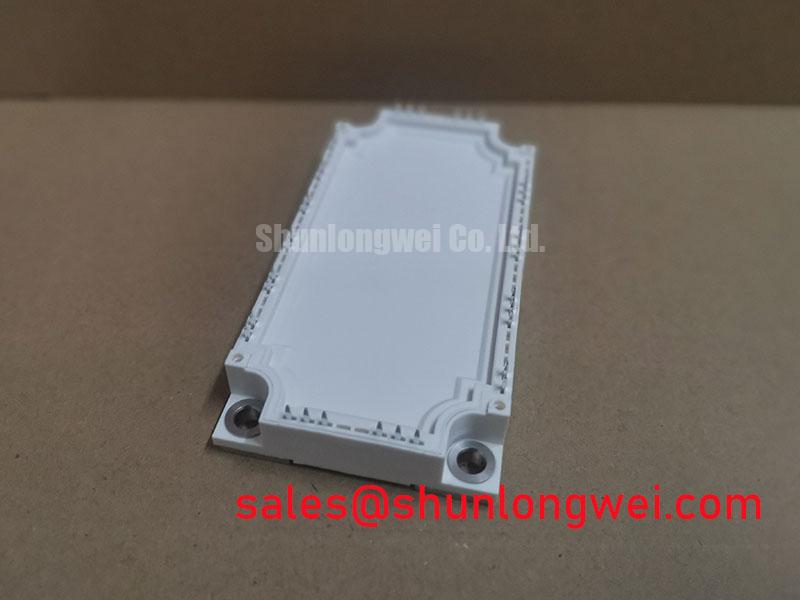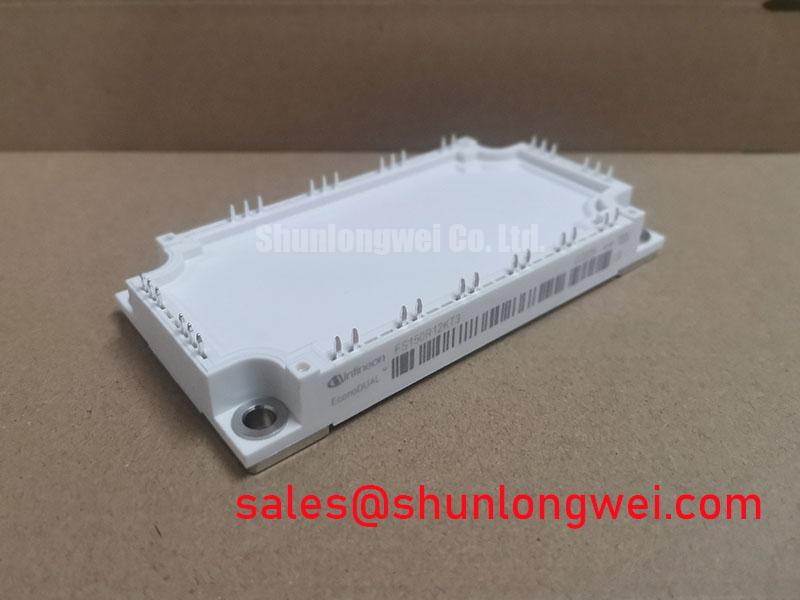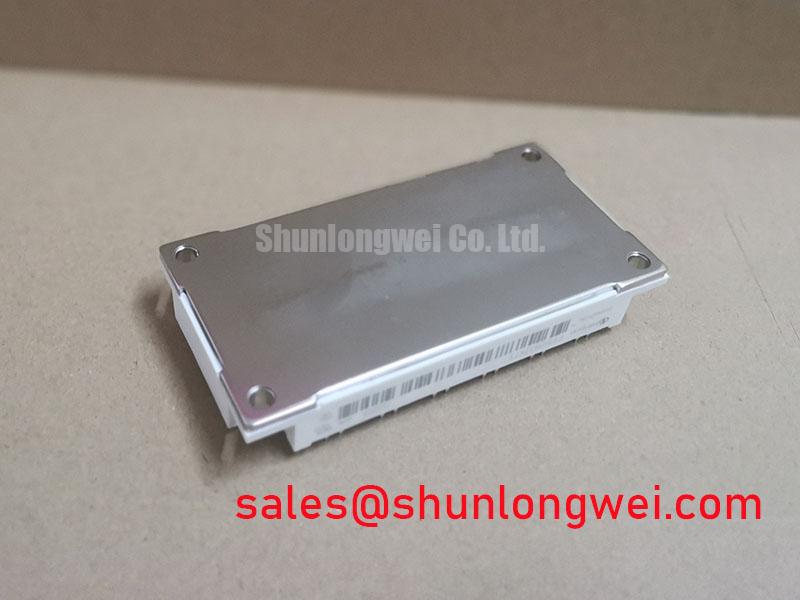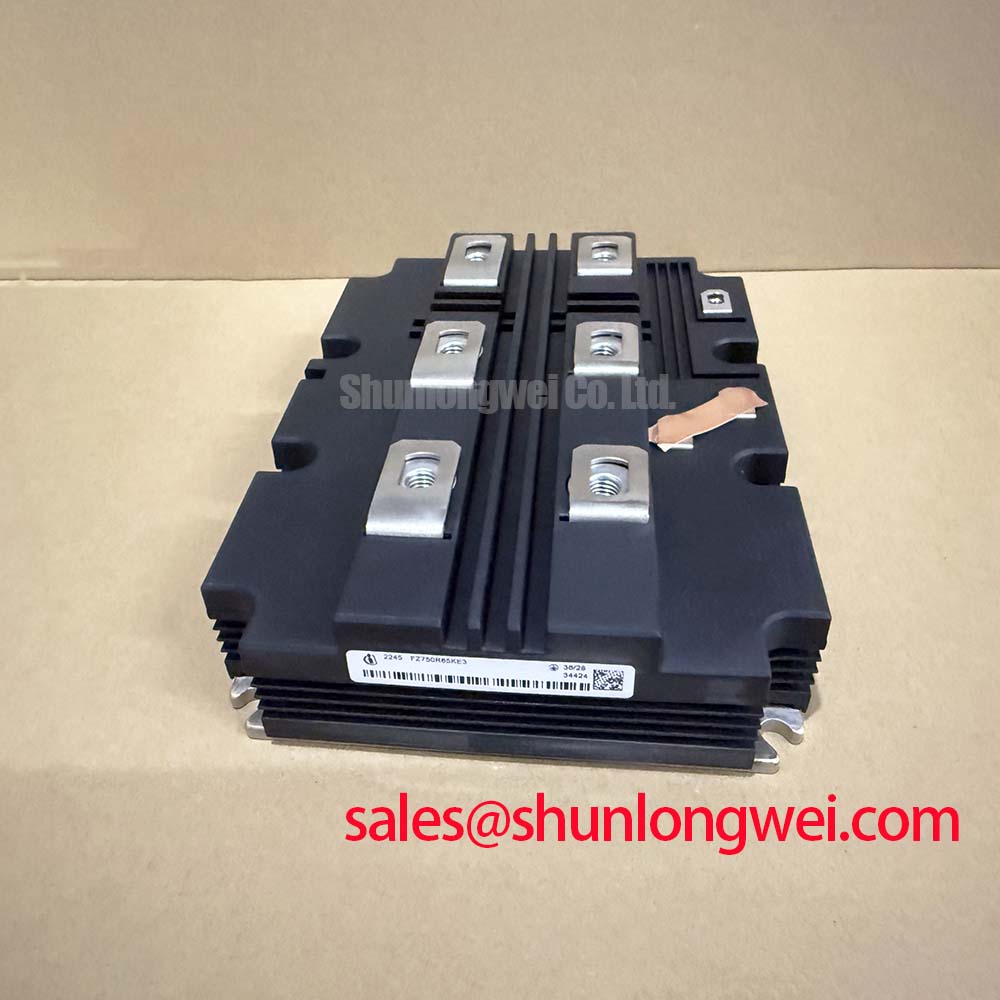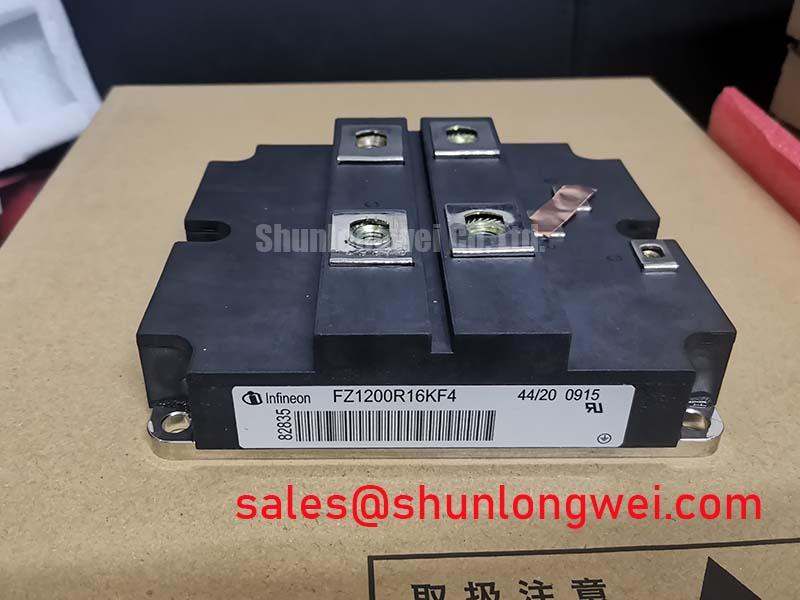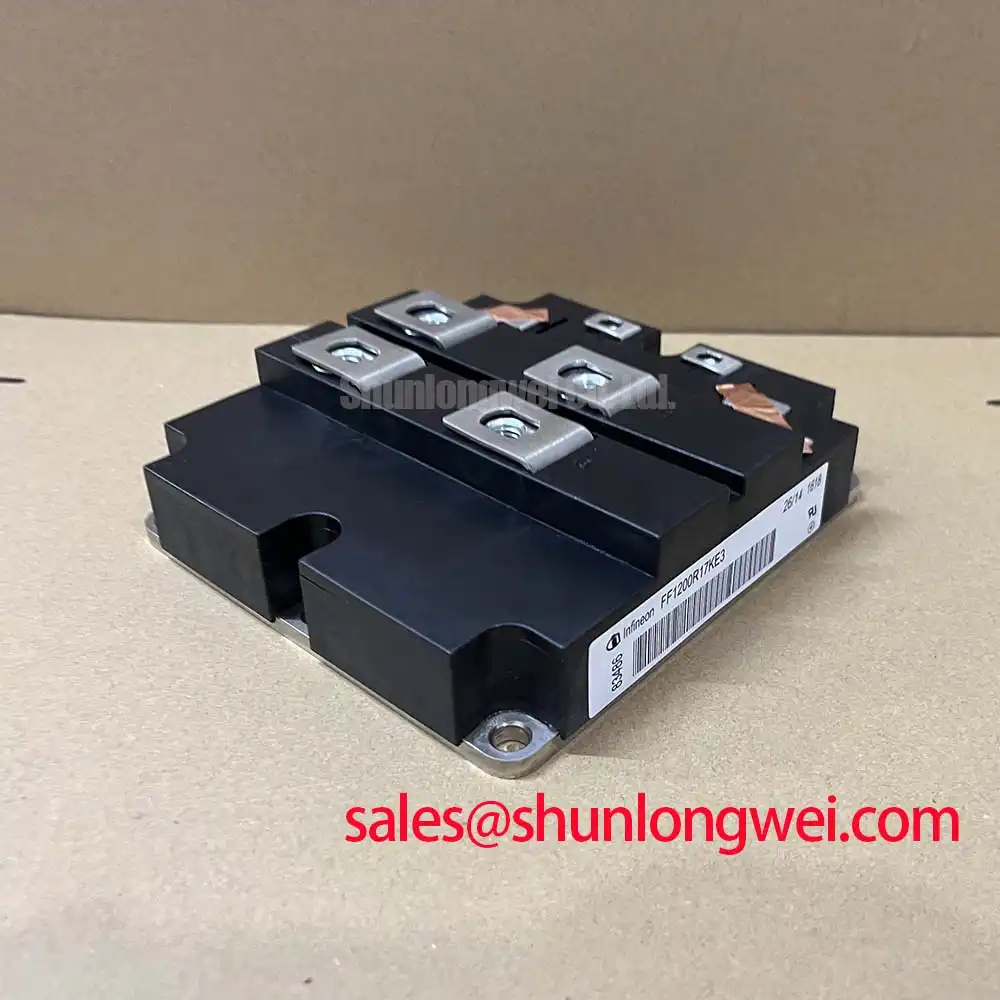Content last revised on November 15, 2025
FS150R12KT3: 1200V 150A IGBT Module for Efficient Drives
Technical Overview of the Infineon FS150R12KT3 IGBT Module
The Infineon FS150R12KT3 EconoPACK™ 2 module provides a robust foundation for high-efficiency power conversion systems, balancing low conduction losses with superior soft-switching diode performance. At its core, the module leverages Infineon's TRENCHSTOP™ IGBT3 technology, which offers a favorable trade-off between switching and conduction losses. What defines the IGBT3's performance? A superior balance between low on-state voltage and switching energy. This is paired with an Emitter Controlled 3 diode, engineered for soft recovery characteristics, directly addressing the engineering challenge of mitigating electromagnetic interference (EMI) at the source.
Operational Contexts: Where Efficiency Meets Demand
The FS150R12KT3 is specified for applications where operational efficiency and long-term reliability are primary design criteria. Its electrical and thermal characteristics make it a strong candidate for a range of medium-power inverter applications.
- Motor Drives: The module's ability to handle 150A and its optimized switching behavior are well-suited for industrial AC motor drives, servo drives, and general-purpose inverters. The soft-recovery diode minimizes voltage stress on the motor windings.
- Solar Inverters: In grid-tied solar applications, maximizing energy harvest is critical. The low VCE(sat) of the TRENCHSTOP™ IGBT3 technology reduces power dissipation during peak generation hours, contributing to a higher overall system efficiency.
- Uninterruptible Power Supplies (UPS): The module's robust thermal performance and integrated NTC thermistor allow for precise temperature monitoring, a key requirement in high-availability UPS systems to ensure stable operation during critical load support.
For motor drives up to 45 kW requiring high efficiency at moderate switching frequencies (5-10 kHz), the FS150R12KT3's low VCE(sat) of 1.7V presents a thermally advantaged solution.
Strategic Implications in Modern Power Conversion
Integrating the FS150R12KT3 goes beyond meeting immediate performance targets; it aligns with broader industry trends toward more compact and energy-efficient systems. The EconoPACK™ 2 housing, a widely adopted industry-standard footprint, simplifies mechanical design and facilitates second-sourcing strategies. As energy efficiency regulations become more stringent, utilizing components like the FS150R12KT3, with its focus on loss reduction, provides a direct path to compliance. The inherent reliability of its internal technologies supports the development of power systems with extended operational lifetimes and lower total cost of ownership, a critical factor in industrial capital equipment. For further reading on the core principles of IGBT operation, see this guide on how an IGBT works.
A Closer Look at the TRENCHSTOP™ IGBT3 and Diode Synergy
The performance of the FS150R12KT3 is defined by the synergy between its core silicon components. The TRENCHSTOP™ IGBT3 technology represents a mature and well-regarded platform. It achieves a low collector-emitter saturation voltage (VCE(sat)), which is directly proportional to conduction losses—the heat generated when the switch is fully on. Think of VCE(sat) as the "friction" of the electrical current; lower friction means less energy wasted as heat. This allows for either higher output current from a given heatsink or the use of a smaller, more cost-effective thermal solution.
Complementing the IGBT is the Emitter Controlled 3 (EC3) freewheeling diode. How does the EC3 diode contribute? It ensures soft switching, minimizing voltage overshoots and EMI. A "soft" recovery means the diode turns off smoothly, avoiding the abrupt current changes that generate high-frequency noise. This reduces the need for extensive external snubber circuits and filtering components, simplifying the overall system design and potentially reducing board space and component count. Understanding these component-level details is crucial, as explored in this guide to decoding IGBT datasheets.
Deployment Snapshot: A Motor Drive Scenario
Consider a 30 kW variable frequency drive (VFD) operating from a 400 VAC line. During operation, the FS150R12KT3's low VCE(sat) of 1.70 V (typical at nominal current) directly minimizes conduction losses, a dominant factor at lower motor speeds. As the switching frequency increases to achieve finer motor control, the optimized turn-off energy (Eoff) of the IGBT3 and the soft recovery of the EC3 diode become critical. The diode's behavior prevents high dv/dt values, reducing electrical stress and audible noise in the motor. The integrated NTC thermistor provides real-time feedback to the controller, allowing the drive to safely push performance limits or derate power gracefully in over-temperature conditions, preventing catastrophic failure.
Data-Informed Component Evaluation
When evaluating power modules, a direct comparison of datasheet values provides objective data for engineering decisions. The following table highlights key parameters for the FS150R12KT3. For systems that may require higher current handling within a similar voltage class, the FF200R12KT4 offers a 200A rating in a comparable package family. It is important to assess the complete electrical and thermal profile to determine the best fit for a specific application's load cycle and cooling constraints.
This data is presented to support your technical evaluation process. The suitability of any component is dependent on the specific design parameters of your application.
Core Electrical and Thermal Specifications
The performance of the FS150R12KT3 is defined by its key electrical and thermal ratings. These parameters are fundamental for system-level simulation and design validation.
| Key Parameter | Value | Conditions |
|---|---|---|
| Collector-Emitter Voltage (V_CES) | 1200 V | T_vj = 25°C |
| Continuous Collector Current (I_C) | 150 A | T_C = 80°C, T_vj max = 175°C |
| Collector-Emitter Saturation Voltage (V_CEsat) | 1.70 V (typ.) | I_C = 150 A, V_GE = 15 V, T_vj = 25°C |
| Total Switching Energy (E_ts) | 22.00 mJ (typ.) | I_C = 150 A, V_CE = 600V, V_GE = ±15V, R_G = 5.1 Ω, T_vj = 125°C |
| Thermal Resistance, Junction-to-Case (R_thJC) | 0.11 K/W (per IGBT) | - |
| Short Circuit Withstand Time (t_SC) | 10 µs | V_GE ≤ 15V, V_CC = 800V, T_vj ≤ 150°C |
Download the complete FS150R12KT3 Datasheet for detailed charts and application notes.
Frequently Asked Questions
1. How does the integrated NTC thermistor in the FS150R12KT3 improve system reliability?
The integrated NTC provides accurate, real-time temperature measurement directly at the module's baseplate. This allows the system controller to implement precise over-temperature protection (OTP), preventing thermal runaway. It also enables adaptive control algorithms that can optimize switching frequency or current limits based on the actual thermal load, maximizing performance without exceeding the Safe Operating Area (SOA).
2. What are the primary benefits of the Emitter Controlled 3 diode technology in a motor drive application?
In motor drives, the EC3 diode's "soft" recovery characteristic is key. It reduces voltage overshoots during switching events and minimizes high-frequency oscillations. This leads to lower electromagnetic interference (EMI), simplifying filter design, and reduces voltage stress on the IGBTs and motor insulation, which contributes to longer system lifespan. Exploring the nuances of power semiconductor selection is further discussed in this IGBT vs. MOSFET comparison.
3. Can the FS150R12KT3 be paralleled for higher current applications?
While paralleling IGBT modules is a common practice, it requires careful design considerations. The positive temperature coefficient of the VCE(sat) in the TRENCHSTOP™ IGBT3 technology aids in balancing current sharing between modules. However, designers must ensure symmetrical gate drive layouts and busbar connections to minimize stray inductance mismatches. For detailed guidance, it is essential to consult the manufacturer's application notes on paralleling IGBTs.
Future-Proofing Your Power Stage Design
Selecting a power module like the Infineon FS150R12KT3 is a strategic decision that impacts not only immediate performance but also the future scalability and cost-effectiveness of a product platform. By choosing a component built on proven, efficiency-focused technologies and housed in an industry-standard package, engineering teams can build a reliable power core that is well-positioned to meet tomorrow's demands for higher power density and stricter energy standards. This approach creates a resilient design architecture, reducing the need for costly redesigns as market requirements evolve.



